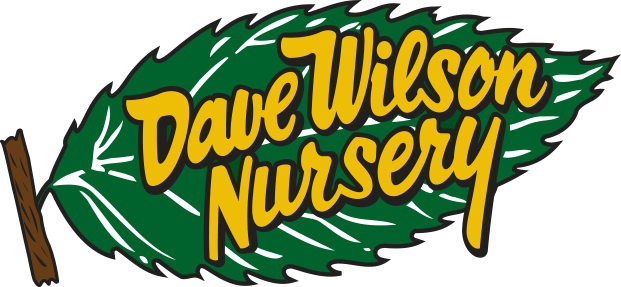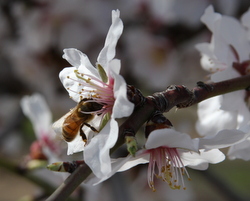We sell our products to retail nurseries, garden centers, container growers who sell to landscape contractors and retail nurseries, mail order nurseries, and anyone else who qualifies. We do not accept direct sales to consumers.
For Home Orchards
Be ready to protect your blossoms from late, heavy rains or frost, if necessary. Covering a small tree or part of a larger one can save some crop.
Eagerness to begin taking care of the home orchard in the new growing season must not lead to overfertilizing. Trees that are pushed to excessive growth are more difficult to maintain and are not as fruitful. Trees that are growing well may not need fertilizer. A mulch of organic matter with mostly larger particle sizes is an excellent slow-release fertilizer for home orchard trees.
Be ready to monitor weather forecasts and soil moisture as the seasons change and irrigation schedules require adjusting – first for warmer weather and plant growth, then for hot weather.
Take some time to learn more about a key aspect of fruit growing: rootstocks. Rootstocks do more than just determine the ultimate size of an unpruned tree. Traits bred into rootstocks that affect the viability of a fruit tree can include cold hardiness, tolerance to wet or dry soil and/or disease resistance. Rootstocks also have a direct effect on how many years until that tree bears fruit. Learn about rootstock traits; when purchasing a new tree, choose a rootstock that fits the bill for your growing conditions or region. When irrigating existing trees, consider the needs of each rootstock.
Understanding the basic functions of a plant’s roots, it’s easy to recognize why rootstocks may be the life or death of a tree. For instance, a rootstock that requires good drainage is not going to flourish in heavy soil that is frequently wet (be it by rain or lawn sprinkler). A rootstock that requires consistently moist soil (i.e. is not drought tolerant) cannot be expected to survive a hot summer without adequate supplemental irrigation. A given fruit variety can be a success on one rootstock and a failure on another.
Growing fruit is an investment! When purchasing a tree, ask about the rootstock. Is it identified and labeled with care instructions? What do your Cooperative Extension advisors and Master Gardeners say about rootstocks for local conditions? Understanding how rootstocks are instrumental in tipping the scales toward tree health and productivity is valuable, pertinent information.
References:
Protect Your Fruit Trees
Water and Mulch
Fruit & Nut Tree Rootstocks
Rootstock Comparisons
Links By State – Cooperative Extension & Master Gardener

